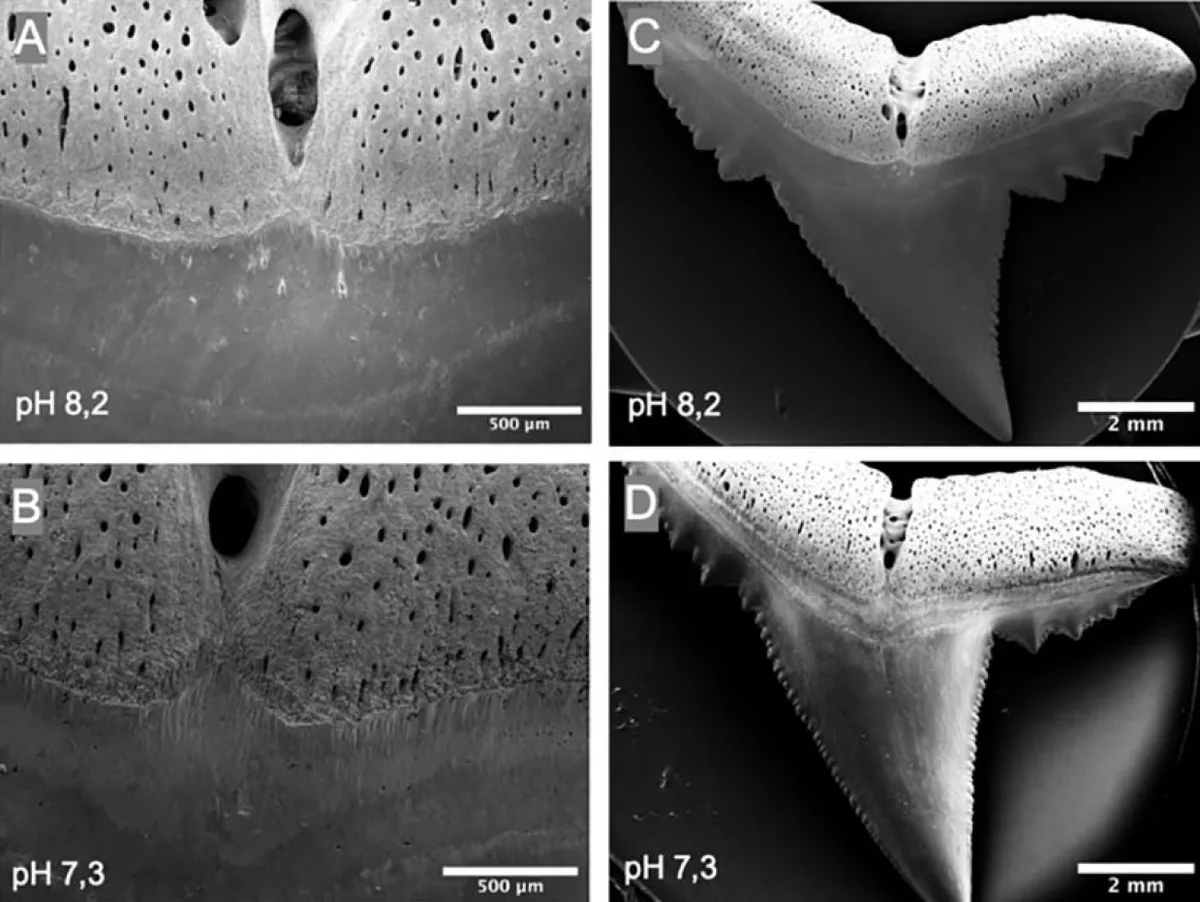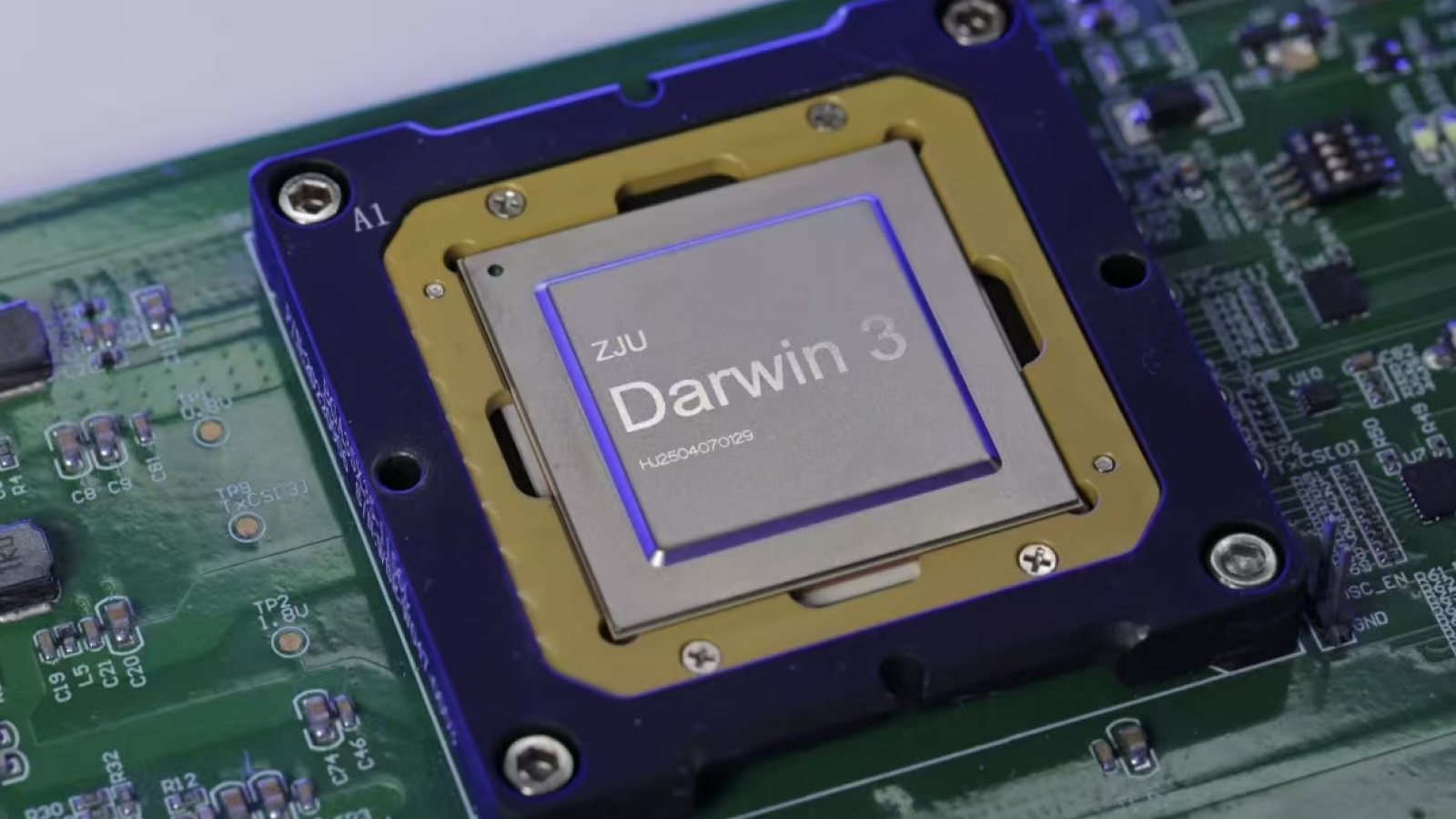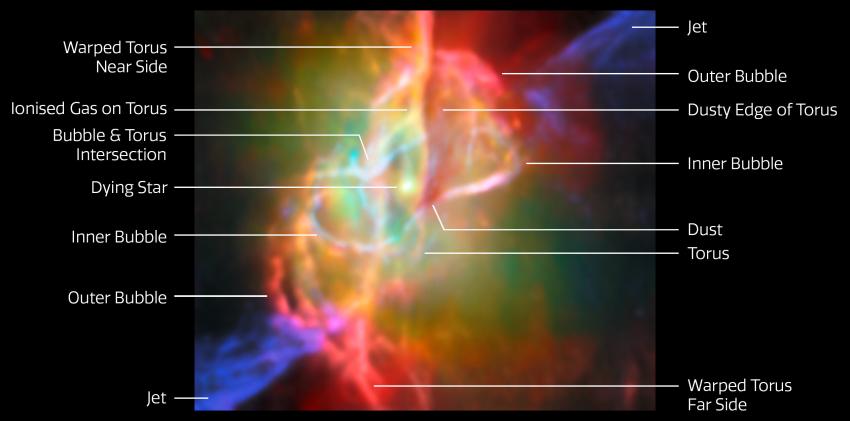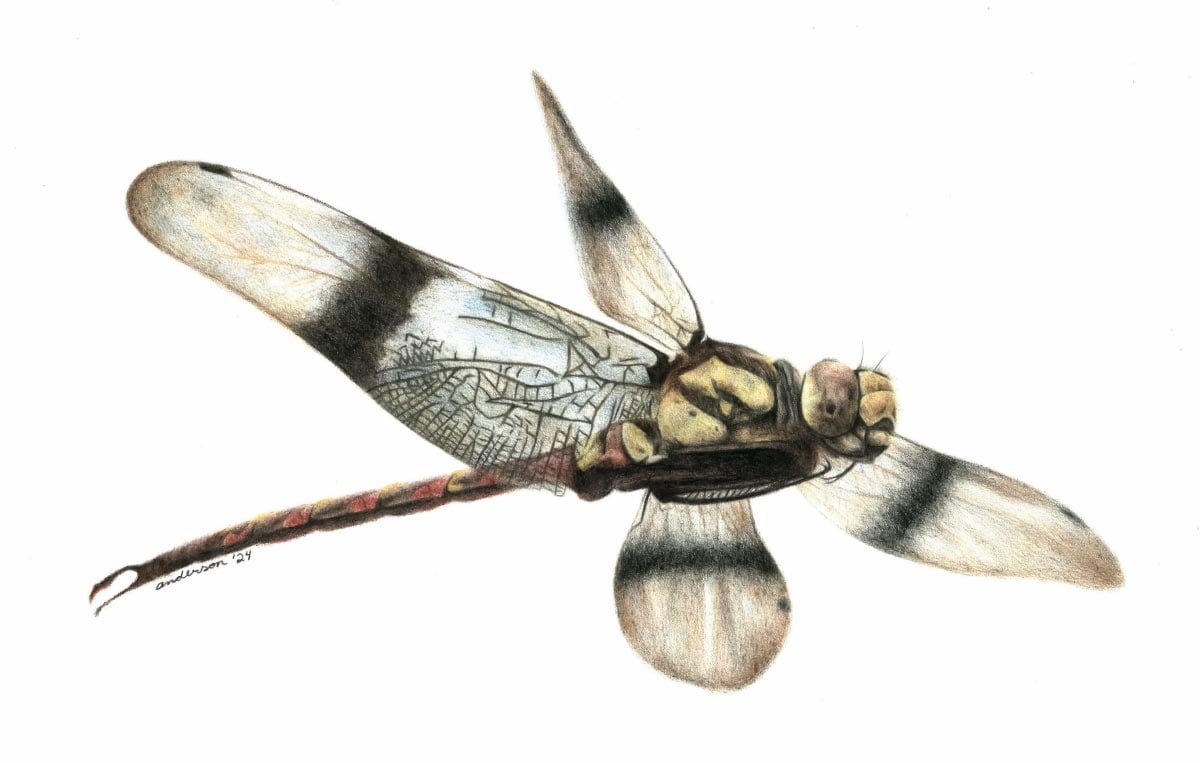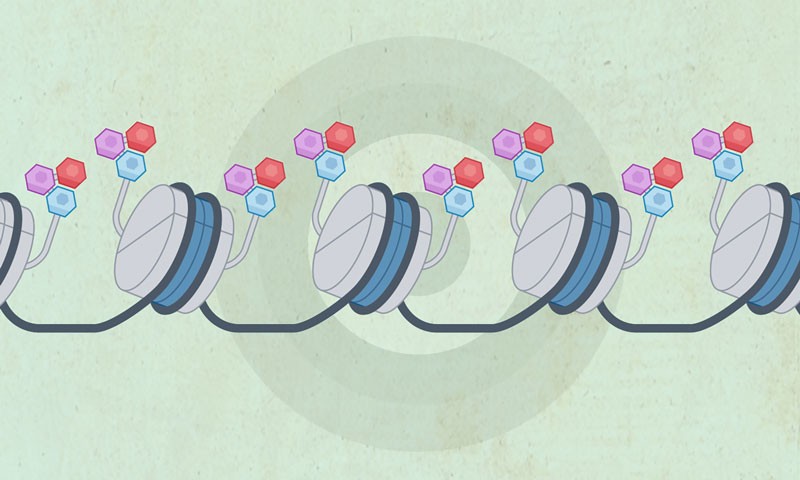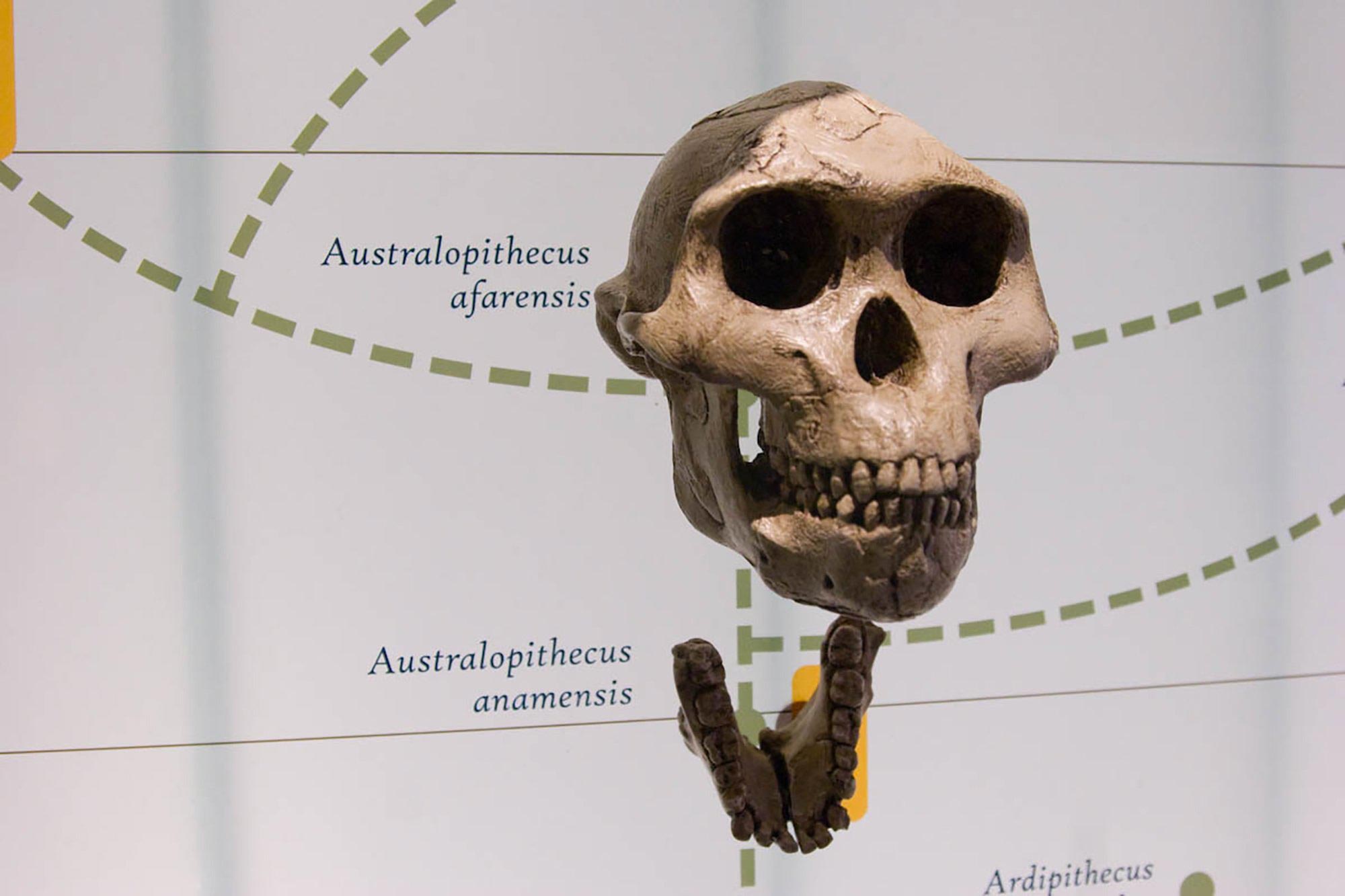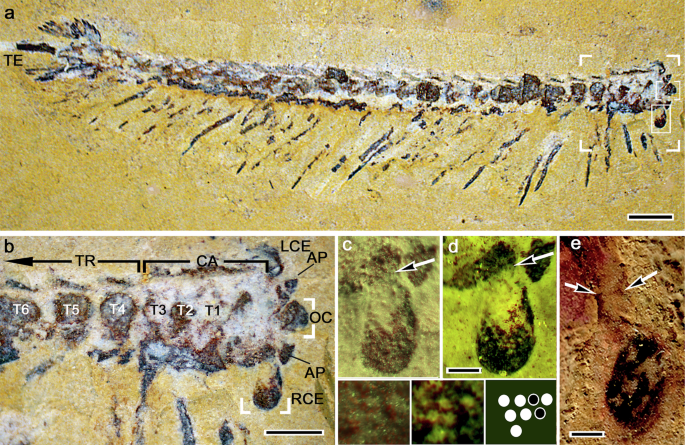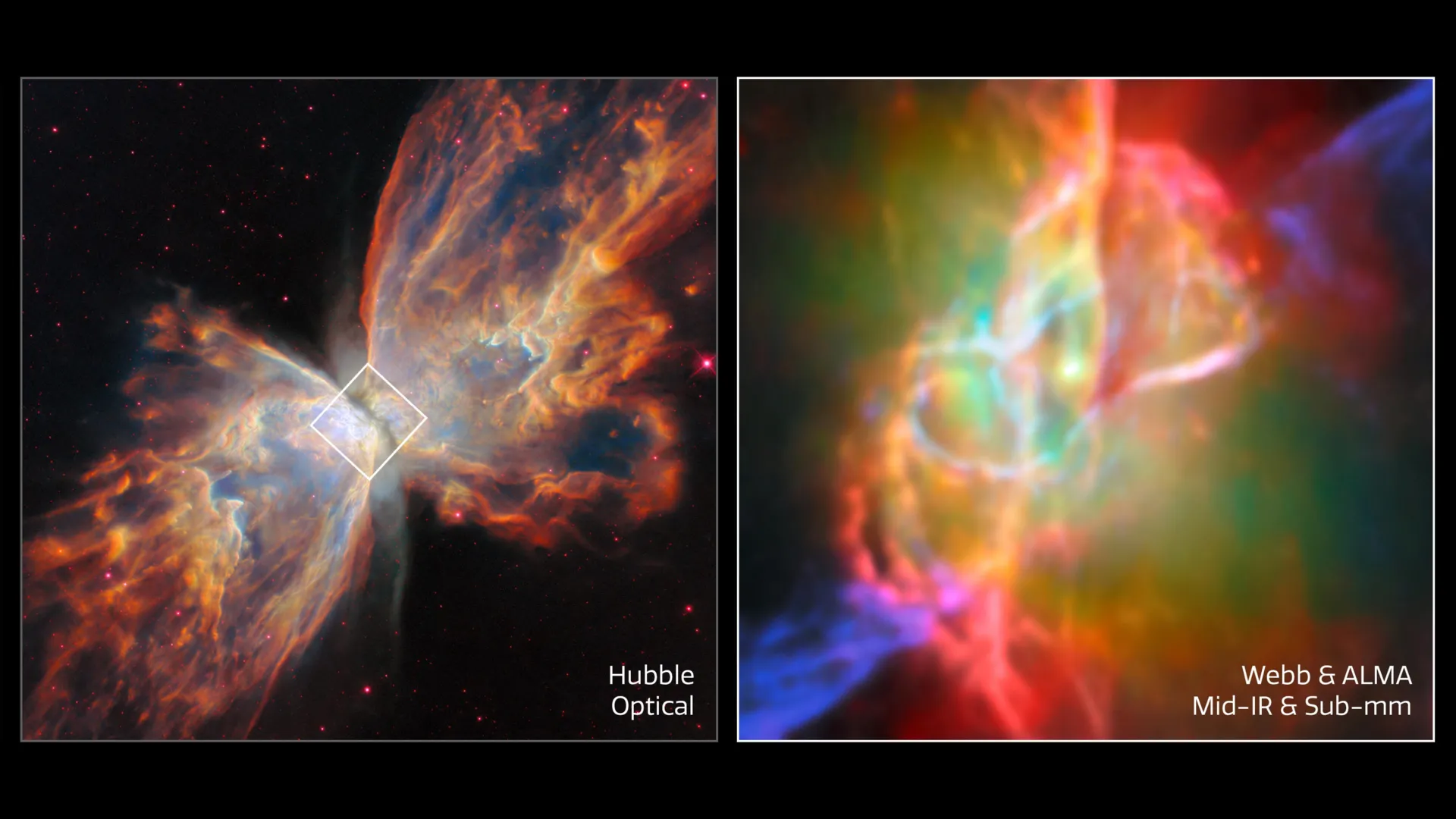Ma, X., Edgecombe, G. D., Hou, X., Goral, T. & Strausfeld, N. J. Preservational pathways of corresponding brains of a cambrian euarthropod. Curr. Biol. 25, 2969–2975 (2015).
Google Scholar
Tanaka, G., Hou, X., Ma, X., Edgecombe, G. D. & Strausfeld, N. J. Chelicerate neural ground pattern in a Cambrian great appendage arthropod. Nature 502, 364–367 (2013).
ADS
Google Scholar
Lan, T., Zhao, Y., Zhao, F., He, Y., Martinez, P. & Strausfeld, N. J. Leanchoiliidae reveals the ancestral organization of the stem euarthropod brain. Curr. Biol. 31, 4397–4404 (2021).
Google Scholar
Strausfeld, N. J., Hou, X., Sayre, M. E. & Hirth, F. The lower Cambrian lobopodian Cardiodictyon resolves the origin of euarthropod brains. Science 378, 905–909 (2022).
ADS
Google Scholar
Bernot, J. P., Owen, C. I., Wolfe, J. M., Meland, M., Olesen, J. & Crandall, K. A. Major revisions in pancrustacean phylogeny and evidence of sensitivity to taxon sampling. Mol. Biol. Evol. 40, msad175 (2023).
Google Scholar
Hou, X.-G. Two new arthropods from lower Cambrian, Chengjiang, eastern Yunnan. Acta Palaeontol. Sin. 26, 236–255 (1987).
Google Scholar
Haug, J. T., Waloszek, D., Maas, A., Liu, Y. & Haug, C. Functional morphology, ontogeny and evolution of mantis shrimp-like predators in the Cambrian. Palaeontology 55, 369–399 (2012).
Google Scholar
Ortega-Hernández, J. Homology of head sclerites in burgess shale euarthropods. Curr. Biol. 25, 1625−1631 (2015).
Schoenemann, B. & Clarkson, E. N. K. The median eyes of trilobites. Sci. Rep. 13, 3917 (2023).
ADS
Google Scholar
Reimann, R. & Richter, S. The nauplius eye complex in ‘conchostracans’ (Crustacea, Branchiopoda: Laevicaudata, Spinicaudata, Cyclestherida) and its phylogenetic implications. Arthr. Struct. Dev. 36, 408–419 (2007).
Google Scholar
Nässel, D. R. & Hagberg, M. Ocellar interneurones in the blowfly Calliphora erythrocephala: morphology and central projections. Cell Tissue Res. 242, 417–426 (1985).
Google Scholar
Steinmetz, P. R., Urbach, R., Posnien, N., Eriksson, J. et al. Six3 demarcates the anterior-most developing brain region in bilaterian animals. EvoDevo 1, 14 (2010).
Google Scholar
Posnien, N., Koniszewski, N. D. B., Hein, H. J. & Bucher, G. Candidate gene screen in the red flour beetle Tribolium reveals six3 as ancient regulator of anterior median head and central complex development. PLOS Genet. 7, e1002416 (2011).
Google Scholar
Domínguez-Cejudo, M. A. & Casares, F. Anteroposterior patterning of Drosophila ocelli requires an anti-repressor mechanism within the hh pathway mediated by the Six3 gene Optix. Development 142, 2801–2809 (2015).
Google Scholar
Snodgrass, R. E. Comparative studies on the head of mandibulate Arthropods. Annal. Entomol. Soc. Am. 44, 2 (1951).
Strausfeld, N. J. et al. Arthropod eyes: The early Cambrian fossil record and divergent evolution of visual systems. Arthropod Struct. Dev. 45, 152–172 (2016).
Google Scholar
Cohen, S. M. & Jürgens, G. Gap-like segmentation genes that mediate Drosophila head development. Nature 346, 482–485 (1990).
ADS
Google Scholar
Strausfeld, N. J. & Olea-Rowe, B. Convergent evolution of optic lobe neuropil in Pancrustacea. Arthr. Struct. Dev. 61, 1467–8039 (2021).
Google Scholar
Zenon, M., Ryszard, C. & Verschure, P. F. M. J. Visual anticipation biases conscious decision making but not bottom-up visual processing. Front Psychol. 5, 1443 (2015).
Google Scholar
Kirsch, R. & Richter, S. The nervous system of Leptodora kindtii (Branchiopoda, Cladocera) surveyed with confocal scanning microscopy (CLSM), including general remarks on the branchiopod neuromorphological ground pattern. Arthr. Struct. Dev. 36, 143–156 (2007).
Google Scholar
Harzsch, S. & Glötzner, J. An immunohistochemical study on structure and development of the nervous system in the brine shrimp Artemia salina Linnaeus, 1758 (Branchiopoda, Anostraca) with remarks on the evolution of the arthropod brain. Arthr. Struct. Dev. 30, 251–270 (2002).
Google Scholar
Harzsch, S. From stem cell to structure: neurogenesis in the cns of decapod crustaceans. In The Crustacean Nervous System. (ed. Wiese, K.) 417−432 (Springer, 2002).
Strausfeld, N. J., Wolff, G. H. & Sayre, M. E. Mushroom body evolution demonstrates homology and divergence across Pancrustacea. ELife 9, e52411 (2020).
Google Scholar
Strausfeld, N. J. Arthropod Brains: Evolution, Functional Elegance, And Historical Significance, Vol. 848 (Harvard University Press, 2012).
Dohle, W. Are the insects terrestrial crustaceans? In: T. Deuve (ed) Origin of the Hexapoda. Ann. Soc. Entmol. Fr. 37, 85–103 (2001).
Google Scholar
Rathore, S., Meece, M., Charlton-Perkins, M,. Cook, T. A. & Buschbeck E. K. Probing the conserved roles of cut in the development and function of optically different insect compound eyes. Front. Cell Dev. Bio. 11, 104620 (2023).
Charlton-Perkins, M. A., Friedrich, M. & Cook, T. A. Semper’s cells in the insect compound eye: Insights into ocular form and function. Dev. Biol. 479, 126–138 (2021).
Google Scholar
Müller, C. H. G., Rosenberg, J., Richter, S. et al. The compound eye of Scutigera coleoptrata (Linnaeus, 1758) (Chilopoda: Notostigmophora): an ultrastructural reinvestigation that adds support to the Mandibulata concept. Zoomorphology 122, 191–209 (2003).
Google Scholar
Sombke, A., & Müller, C. H. G. The visual system of myriapoda. In Distributed Vision (eds. Buschbeck, E. & Bok, M.) (Springer, 2023).
Strausfeld, N. J. & Andrew, D. R. A new view of insect-crustacean relationships I. Inferences from neural cladistics and comparative neuroanatomy. Arthropod Struct. Dev. 40, 276–88 (2011).
Google Scholar
Strausfeld, N. J., Andrew, D. R. & Hirth, F. Cambrian origin of the arachnid brain. Curr. Biol. 35, 1–9 (2025).
Google Scholar
Russell, D., Bicknell, C., Ortega-Hernández, J., Edgecombe, G. D., Gaines, R. R. & Paterson, J. R. Central nervous system of a 310-m.y.-old horseshoe crab: expanding the taphonomic window for nervous system preservation. Geology 49, 1381–1385 (2021).
ADS
Google Scholar
Swofford, D. L. PAUP*. Phylogenetic analysis using parsimony (*and Other Methods). Version 4. Sinauer associates, Sunderland, massachusetts. Evolution https://doi.org/10.1111/j.0014-3820.2002.tb00191.x (2003).
Ronquist, F., Teslenko, M., van der Mark, P., Ayres, D. L., Darling, A., Höhna, S., Larget, B., Liu, L., Suchard, M. A. & Huelsenbeck, J. P. M. R. B. A. Y. E. S. 3.2: Efficient Bayesian phylogenetic inference and model selection across a large model space. Syst. Biol. 61, 539–542 (2012).
Google Scholar
Liu, Y., Haug, J., Haug, C. et al. A 520 million-year-old chelicerate larva. Nat. Commun. 5, 4440 (2014).
ADS
Google Scholar
Briggs, D. E. G. & Collins, D. The arthropod Alalcomenaeus cambricus Simonetta, from the middle Cambrian Burgess Shale of British Columbia. Palaeontology 42, 953–977 (1999).
Google Scholar
Haug, J. T., Briggs, D. E. & Haug, C. Morphology and function in the Cambrian Burgess Shale megacheiran arthropod Leanchoilia superlata and the application of a descriptive matrix. BMC Evol. Biol. 12, 162 (2012).
Google Scholar
Chen, J., Waloszek, D. & Maas, A. A new ‘great-appendage’ arthropod from the Lower Cambrian of China and homology of chelicerate chelicerae and raptorial antero-ventral appendages. Lethaia 37, 3–20 (2004).
Google Scholar
Schaeper, N. D., Pechmann, M., Damen, W. M. G., Prpic, N.-M., & Wimmer, E. A. Evolutionary plasticity of collier function in head development of diverse arthropods. Dev. Biol. 344, 363–376 (2010).
Google Scholar
Mohler, J., Mahaffey, J. P., Deutsch, E. & Vani, K. Control of Drosophila head segment identity by the bZIP homeotic gene cnc. Development 121, 237–247 (1995).
Google Scholar
Coulcher, J. F. & Telford, M. J. Cap’n’collar differentiates the mandible from the maxilla in the beetle Tribolium castaneum. EvoDevo 3, 25 (2012).
Google Scholar
Sharma, P. P., Gupta, T., Schwager, E. E., Wheeler, W. C. & Extavour, C. G. Subdivision of arthropod cap-n-collar expression domains is restricted to Mandibulata. Evodevo 5, 3 (2014).
Google Scholar
Pearson, J., Lemons, D. & McGinnis, W. Modulating Hox gene functions during animal body patterning. Nat. Rev. Genet. 6, 893–904 (2005).
Google Scholar
Sombke, A. & Rosenberg, J. Myriapoda. In Structure and Evolution of Invertebrate Nervous Systems (eds. Schmidt-Rhaesa, A., Harzsch, S. & Purschke, G.) 478−491 (Oxford University Press, 2016).
Sharma, P. P. et al. A conserved genetic mechanism specifies deutocerebral appendage identity in insects and arachnids. Proc. R. Soc. B. 282, 20150698 (2015).
Setton, E. V. W. et al. Expression and function of spineless orthologs correlate with distal deutocerebral appendage morphology across Arthropoda. Dev. Biol. 430, 224–236 (2017).
Dahms, H.-U. Development of functional adaptation to clasping behaviour in harpacticoid copepods (Copepoda, Harpacticoida). Hydrobiologia 167/168, 505–513 (1988).
Google Scholar
Andrew, D. R., Brown, S. M. & Strausfeld, N. J. The minute brain of the copepod Tigriopus californicus supports a complex ancestral ground pattern of the tetraconate cerebral nervous systems. J. Comp. Neurol. 520, 3446–3470 (2012).
Google Scholar
Edgecombe, G. D., García–Bellído, D. C. & Paterson, J. R. A new leanchoiliid megacheiran arthropod from the lower Cambrian Emu Bay Shale, South Australia. Acta Palaeontol. Pol. 56, 385–400 (2011).
Google Scholar
Cotton, T. J. & Braddy, S. J. The phylogeny of arachnomorph arthropods and the origin of the Chelicerata. Trans. R. Soc. Edinb.: Earth Sci. 94, 169–193 (2003).
Google Scholar
Parry, L. A. et al. A pyritized Ordovician leanchoiliid arthropod. Curr. Biol. 34, 5578–5586 (2024).
Bergström, J. & Hou, X–G. Early Palaeozoic iamellipedian Arthropods. In Crustacea and Arthropod Relationships. Crustacean Issues (Koenemann, S. & Jenner R. A.) 73–93 (2005)
Budd, G. A palaeontological solution to the arthropod head problem. Nature 417, 271–275 (2002).
ADS
Google Scholar
Letunic, L. & Bork, P. Interactive tree of life (iTOL) v6: recent updates to the phylogenetic tree display and annotation tool. Nucleic Acid Res. 52, 78–82 (2024).
Google Scholar
Wolfe, J. M. & Ortega-Hernández J. Evolution: Oh, my Cambrian nerves. Curr. Biol. 31, R1132−R1135 (2021).
Melcher, C. & Pankratz, M. J. Candidate gustatory interneurons modulating feeding behavior in the Drosophila brain. PLoS Biol. 3, e305 (2005).
Google Scholar
